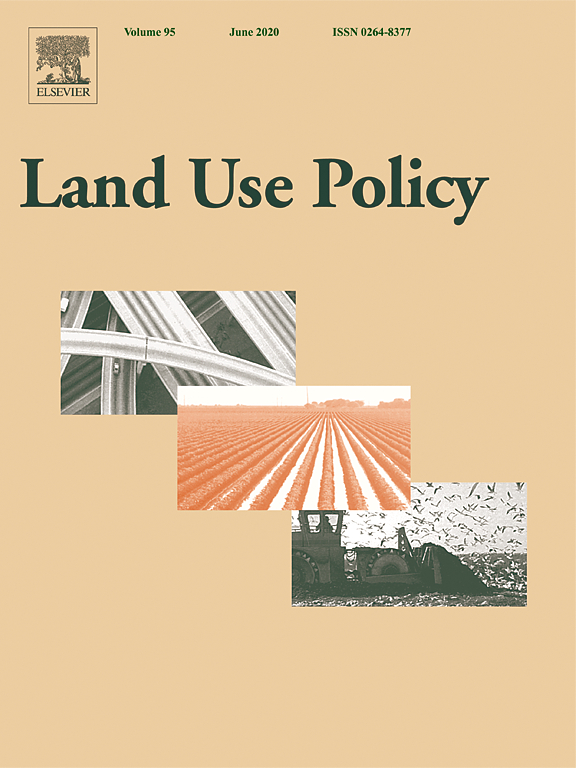Location
Land Use Policy is an international and interdisciplinary journal concerned with the social, economic, political, legal, physical and planning aspects of urban and rural land use. It provides a forum for the exchange of ideas and information from the diverse range of disciplines and interest groups which must be combined to formulate effective land use policies. The journal examines issues in geography, agriculture, forestry, irrigation, environmental conservation, housing, urban development and transport in both developed and developing countries through major refereed articles and shorter viewpoint pieces.
Land Use Policy aims to provide policy guidance to governments and planners and it is also a valuable teaching resource.
ISSN: 0264-8377
Members:
Resources
Displaying 31 - 35 of 279Mapping hotspots and bundles of forest ecosystem services across the European Union
Forests cover about 40 % of the European Union (EU), providing a wide spectrum of invaluable ecosystem services to more than half a billion people. In order to protect and harness this crucial asset, EU policies are advancing multifunctional management. This study lays a basis for such an effort by mapping the supply of key forest ecosystem services (FES) across the entire EU: wood, water supply, erosion control, pollination, habitat protection, soil formation, climate regulation and recreation.
Land tenure security for women: A conceptual framework
While strengthening women’s land rights is increasingly on national and international agendas, there is little consensus on how to understand women’s tenure security. Analyses of women’s land rights often use very different definitions of land rights, from formal ownership to women’s management of plots allocated to them by their husbands. This paper identifies aspects of women’s tenure that should be included in indicators. It then provides a conceptual framework to identify the various dimensions of women’s land tenure security and the myriad factors that may influence it.
Building an effective coalition to improve forest policy: Lessons from the coastal Tripa peat swamp rainforest, Sumatra, Indonesia
In recent history, Indonesian forest policies have been dominated by deforestation in the name of economic progress. Many actors have expressed concerns about this trend and have tried to reverse it in favour of a more sustainable pathway. From 2004–2017, non-governmental environmental organisations fought for the case of the coastal Tripa peat swamp rainforest in the province of Aceh, Sumatra. Unique in Indonesian history, they managed halting and reversing the deforestation of an area.
Strategic use of land policy instruments for affordable housing – Coping with social challenges under scarce land conditions in Swiss cities
For decades, many cities have introduced densification policy objectives to stop urban sprawl or to promote efficient use of natural resources. In the urban housing sector, however, densification projects often intensify social challenges. Due to rising rents after modernization of existing housing stocks as a consequence of densification, low-income tenants are forced to leave their apartments. Risks of social exclusion and segregation increase simultaneously.
Barrier identification framework for the implementation of blue and green infrastructures
Blue-green infrastructure (BGI) is becoming a more popular means of dealing with climate change and climate change-related events. However, as the concept of BGI is relatively new, many urban and rural planners are unfamiliar with the barriers they may face during the lifecycle of a BGI project. As a result, some have been hesitant to adopt BGI solutions. The literature has unveiled many of the barriers that inhibit the successful development of BGI, however, this information has yet to be presented in a manner that allows for easy identification.



